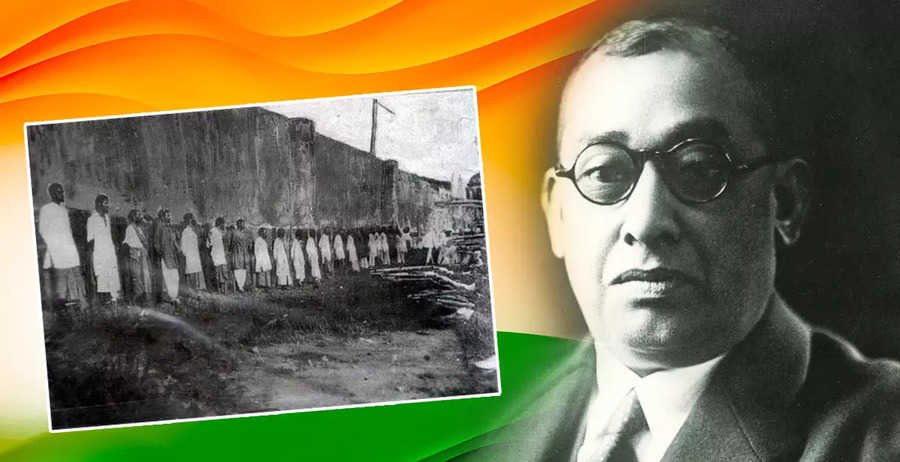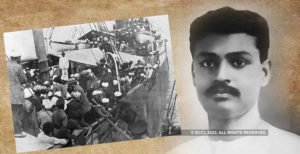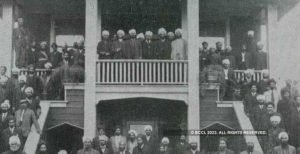What betrayal cost India losing its chance of gaining independence in 1915?


Why read this article
A big impression of Mahatma Gandhi and his non-violent movement is visible on India’s freedom movement. Armed revolutionaries are rarely discussed. But, if fate had supported even a little bit, then perhaps the armed revolutionaries would have been responsible for liberating India. He made two such attempts, which were very close to success.
This whole incident is around the time of the First World War, which had started in July 1914. During this, many veteran Congress leaders including Mahatma Gandhi had decided to support the British rule. He believed that in return the British could give many political concessions after the war. However, not all Indians agreed with this view. Many felt that because of the world war, the English government was weak then and thar was the best time to drive them out of the Indian soil.
This thinking was of those revolutionaries, who believed that freedom can be achieved only and only on the basis of weapons. It is a different matter that most of the history books state that India’s freedom movement was fought in a non-violent manner under the leadership of Mahatma Gandhi. In these, the armed revolutionaries are usually either sidelined or their contribution is greatly underestimated.

But, in reality it was not so. The revolutionaries who relied on weapons also played an important role in the freedom struggle. There were two main centers of the revolutionary movement – Punjab and Bengal. Sporadic efforts were also being made in other parts of the country, in which Varanasi can also be called a big center. These people lived in small groups and carried out their activities. But, due to the efforts of Rasbihari Bose and his young lieutenant Sachindra Nath Sanyal, a large network was being formed.
Rasbihari was making contact with Indians not only in India but across the world, who believed in armed revolution. To put it simply, before the start of the First World War, there was an extensive network of Indian revolutionaries around the world. The revolutionaries almost succeeded in killing the Viceroy Lord Hardinge in December 1912. The Viceroy was passing through Chandni Chowk in Delhi. He was attacked with a bomb. He was badly injured, but his life was saved. None of the attackers were caught.
When World War I was declared, it became clear that the British would have to rely heavily on Indian troops. The revolutionaries found this the best opportunity for rebellion. Rasbihari Bose and Sachindra Sanyal planned that if the revolutionaries and the Indian regiments rebelled together, the British rule could be brought to its knees. They got busy in implementing the plan.
Rasbihari and Sanyal spoke to the Sikhs returning from America and the secret revolutionaries of Bengal. Regiments spread from Punjab to Burma (now Myanmar) were also ready to be a part of the rebellion. This rebellion was named – Gadar Rebellion. It was decided that the revolt would start from Punjab and then other places would be attacked. The date for this was fixed as 21 February 1915.
But, unfortunately, this rebellion ended before it even started. The reason for this was Kirpal Singh. Kirpal was the informer of the British. He told the whole plan to the British just five days before the rebellion. Rasbihari said that the British now know our plan, we should not give them a chance to recover. They decided to mutiny two days before the due date.

But, the British government was fully alert. He replaced Indian guards in all the armory with English guards. Raids also arrested many rebels. The revolutionaries had a plan to attack suddenly, so that the British would not get a chance to recover. But, the British were already prepared for their attack. The revolutionaries could not stand in front of the preparation of the whites and a great opportunity for freedom passed out of their hands.
The rebellion was successful in only one place, in Singapore. There the predominantly Muslim regiments mutinied on 15 February and captured large parts of the island. The British had to fight for a week with all their might to get this share back. After getting back possession, they lined up dozens of revolutionaries and fired them with bullets.
Rasbihari’s plan had failed. Many of his trusted companions were either martyred or were in British captivity. He along with Sanyal took shelter in the narrow streets of Varanasi. However, the police was raiding all around in search of them. At last Rasbihari decided to run away to Japan. Sanyal sent them off to Kolkata, but himself stayed back to organize the rest of the revolutionaries.
When Rasbihari learned that the German war machine had decided to help him, his morale rose again. The Indian Revolutionary Committee was formed in Berlin and it also got the status of a full embassy. Now it was a matter of arms and ammunition to compete with the British. Got these things from America.
Actually, at that time America had not become a part of the First World War. The German Embassy in America obtained 30,000 rifles and pistols along with a large quantity of ammunition from there and arranged to send them secretly to India. Two ships were hired for this. It was decided that both the ships would go to Asia via the Pacific Ocean. Will meet at a specific date and place. From there the weapons would be loaded in small ships and transported to India.
The plan was that the revolutionaries armed with dangerous weapons would capture Kolkata on Christmas day in the year 1915.
But, luck once again did not support the revolutionaries. The two ships could not meet on the date and place where they were supposed to meet. To make matters worse, the British arrested a German agent named Vincent Kraft in Singapore. They lured Vincent that if he told them the plan of the revolutionaries, they would give him a huge reward. Also, he will be resettled in the US with a new identity. Vincent got greedy and he spilled all the secrets in front of the British.
As a result, the British intercepted boats carrying arms to India via Thailand and the Bay of Bengal. The British police raided many places in a systematic manner. About 300 revolutionaries were arrested in Calcutta and Burma. The Christmas Day plot was badly crushed.
Of course, the Ghadar rebellion and the Christmas Day plan failed. But, both these were large-scale plans of armed revolutionaries to overthrow the British rule. If there was a little bit of luck, then these plans would have been successful. Then perhaps the history of India’s independence would have been written in a different way.
DISCLAIMER: The author is solely responsible for the views expressed in this article. The author carries the responsibility for citing and/or licensing of images utilized within the text.
